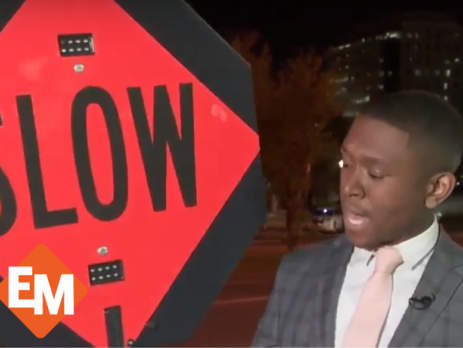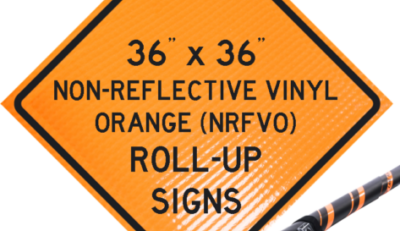stop slow traffic paddles in the news
https://www.youtube.com/watch?v=6qrSQOyZyHU
More information about our Stop and Slow Paddles
Temporary traffic control zone signs convey both general and specific messages by means of words or symbols and have the same three categories as all traffic signs: namely, regulatory signs, warning signs, and guide signs. The colors for regulatory signs shall follow the standard for regulatory signs in section 2B-3. Warning signs in temporary traffic control zones shall have a black legend on an orange background. Yellow warning signs within the traffic control zone which are still applicable may remain in place. Colors for guide signs follow the standard in section 2D-3, except for special information signs as noted below in section 6F-lC.
Where the color orange is specified, fluorescent red- orange or fluorescent yellow-orange colors may be used. The fluorescent versions of orange provide higher conspicuity than standard orange, especially during twilight.
All signs used at night shall be either retroreflective, with a material that has a smooth, sealed outer surface, or illuminated to show similar shape and color both day and night. Sign illumination may be either internal or external. Roadway lighting does not meet the requirements for sign illumination.
Standard orange flags or Type B high-intensity flashing warning lights may be used in conjunction with signs. However, they must not block the sign legend.
The dimensions of signs shown herein are for standard sizes, which may be increased wherever necessary for greater legibility or emphasis. On secondary highways and city streets, smaller signs may be used if authorized by lawful authority. Deviations from standard sizes as prescribed herein shall be in 6-inch increments. Sign design details are contained in Standard Highway Signs.5
As a general rule, signs should be located on the right-hand side of the roadway. When special emphasis is needed, signs may be placed on both the left and right sides of the roadway. Signs may be mounted on portable supports placed within the roadway itself. Signs, although ordinarily mounted on posts, may also be mounted on or above barricades.
Guidelines for height and lateral clearance of temporary post-mounted roadside signs are shown in figure VI-5. Signs erected at the side of the road should be mounted at a height of at least 7 feet, measured from the bottom of the sign to the near edge of the pavement. The height to the bottom of a secondary sign mounted below another sign may be 1 foot less than the appropriate height specified above.
Methods of mounting signs other than on posts are illustrated in figure VI-6. Signs may be mounted on portable supports for short-term, short-duration, and mobile conditions (see section 6G-2). Signs mounted on Type III barricades should not cover more than 50 percent of the top two rails or 33 percent of the total area of the three rails. Unprotected sign systems should be crashworthy (refer to the Roadside 6 Design Guide, chapter Nine, for additional guidance).6 The bottom of signs mounted on barricades or temporary supports shall be no less than 1 foot above the traveled way.








